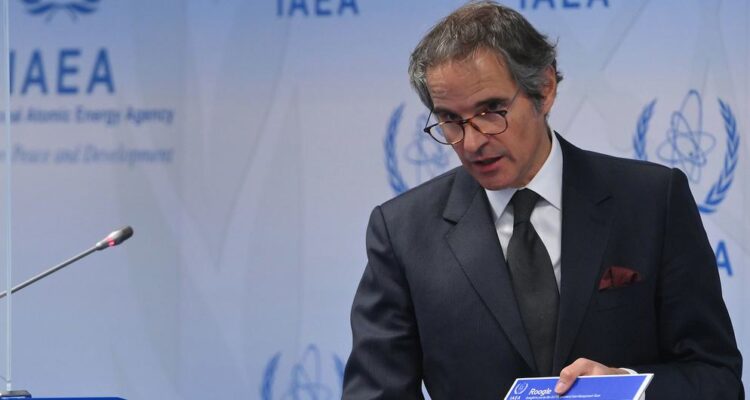There is a nightmare nuclear scenario in Ukraine that does not involve Russia letting loose its arsenal.
Since early March 2022, the Zaporizhzhia Nuclear Power Plant (ZNPP) has been under Russian occupation. This is Europe’s largest nuclear power plant and the tenth largest in the world. The plant is not operational. All six reactors were taken offline at the start of the conflict. But even nuclear power plants that are not running require constant cooling to keep the reactors from melting down. That, in turn, requires that a steady stream of electricity. But ZNPP is near the frontlines and fighting in the vicinity has routinely interrupted power supplies. This is really dangerous.
On Monday, May 22, for the seventh time since Russia’s invasion, the plant was knocked off the main power grid. Thankfully, backup diesel generators kicked in and the cooling systems held.
But make no mistake: this was yet another near miss.
As Ukraine prepares for a much anticipated counteroffensive to re-take its sovereign territory, including occupied Zaporizhzhia, there is mounting concern that a major nuclear power may be the scene of heavy fighting. In that situation, the worst case scenario — a full blown nuclear meltdown — is not the kind of remote possibility it ought to be.
“There have been some models done by U.N. and other treaty organizations to look at the potential spread of radioactivity,” nuclear expert Jon Wolfsthal told me last year on an episode of Global Dispatches. “And in the case of a meltdown, the worst case you could see radioactivity spread all over Europe and beyond very quickly. This is something that would have dramatic effects both on the health and the economies of the populations in Europe. I think it would actually drive a much greater escalation of the fighting in Ukraine because of the fact that the damage being done would no longer be contained to Ukraine itself, but would be basically a European conflict.”
The risk of a meltdown at the Zaporizhzhia Nuclear Power Plant is far higher than it should be.
For months, International Atomic Energy Agency head Rafael Grossi has been floating proposals to reduce that risk. Last August, Grossi negotiated access across battle lines to ZNPP where he literally shouted from the rooftops that the area around the plant ought to be a sort of demilitarized zone, immune from fighting. He was able to station a handful of IAEA safety technicians at the plant, but his bigger warning has gone unheeded. Despite his best efforts, Russia and Ukraine have not agreed to a protection zone around ZNPP.
Now, as Ukraine readies an apparent counter-offensive, Grossi is trying a new tactic: taking his calls directly to the UN Security Council. Per the Washington Post , Grossi has been floating a five point plan to reduce the risk of a nuclear accident at ZNPP.
According to two diplomats familiar with the negotiations, Grossi’s plan includes five principles: a ban on stationing heavy military equipment and military personnel at the plant; a ban on firing from and toward the plant, including a ban on attacking the personnel at the site; protection of all safety and security systems at the plant; protection of all external power lines; and monitoring of compliance of the above-mentioned principles.
The diplomatic dynamics of getting this through the Security Council are tough—but not impossible. Moscow is reportedly on board with this proposal, which should not be a surprise given that it would essentially preclude Ukraine from fighting over territory Russia stole in 2022. For that same reason, Ukraine is not on board.
But the consequences potential nuclear accident at ZNPP are far reaching enough that Ukraine’s backers on the Security Council — the USA, France and the UK — may consider Grossi’s proposal prudent risk management in an uncertain conflict. The proposal does not cede Ukrainian territory, but only suggests that this one bit of land not be the scene of hot fighting. (Also: a ZNPP plan supported by Ukraine’s key backers may protect the Zelensky government from accusations that it is needlessly acquiescing to Russia. It could give Ukraine the political space required to support such an agreement.)
The IAEA — and Grossi — are stepping up in a big way. They are doing what we would expect of an international organization dedicated to nuclear security. This is not a proposal to stop the war— far from it. But if enacted, the proposal would reduce the risk of a cataclysmic nuclear accident that could devastate entire populations in Europe and beyond.
If the Washington Post’s reporting is accurate, Grossi will publicly float his proposal in the coming days at the Security Council. This is a debate worth having.
